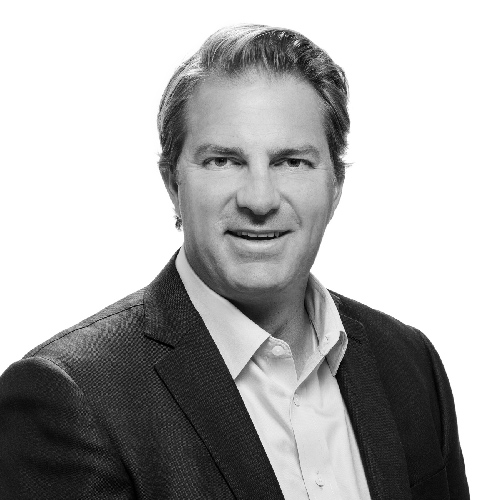Human resources is sometimes seen as the “hiring and firing department.” But for Cheryl Levy, chief human resources officer of HealthSouth, it’s the “retention department.”
The HealthSouth network supports 123 hospitals, as well as a home health division. Human resource directors in each hospital are directed by Levy, who oversees more than thirty thousand HealthSouth employees. And with those thousands of workers, retention is Levy’s primary concern.
HealthSouth is an inpatient rehabilitation and home health organization, and the majority of the company’s employees are nurses and therapists in different disciplines. As demand grows in the marketplace thanks to the retirement of many in the baby boomer generation, the number of nursing graduates has steadily declined. “It’s a tight market,” Levy says. “Looking at hiring the right people, who will enjoy the environment and the patients we have, is crucial. We need to find the right fit, the right skill set, and people who can work well together.” In this tight market, Levy works to ensure HealthSouth avoids high turnover.

To that end, she has studied not only her organization, but similar companies in the industry. The turnover rate at HealthSouth among nurses is comparable to competitors and lower among therapists. Using the exit interview process, Levy has been able to glean why some employees leave the company. She’s also been able to extrapolate the different needs that are unique to workers in different generations. “Millennials need to be in environments in which they’re comfortable,” she says. “They’re looking for a lot of individual development, more flexibility, and more rewards and recognition. That isn’t necessarily financial, such as compensation and benefits. They want to feel valued in their organizations.”
Exit interviews are one method of gleaning this information. Another is the employee satisfaction survey, which HealthSouth began distributing in 2009. “With turnover and company growth, we need to be on top of changes, trends, and concerns faster,” Levy says.
“Looking at hiring the right people, who will enjoy the environment and the patients we have, is crucial.”
When the survey began, some employees were concerned about confidentiality, but they have since moved past that with reassurance from the human resources department. Since then, the feedback has been invaluable. “We got insight into what programs could be instituted, employee benefits, how employees were evaluating themselves and their teams, how management perceived them, group dynamics, making the right decisions for patients, and diversity and inclusion,” Levy says. “It has been really well received.” The survey system will be revamped in 2018, she says, and she expects it to be an annual survey, though it will be distributed in different hospitals each year.
Therapists at HealthSouth work in two different environments. They work with patients for two weeks on average, helping them learn to care for themselves again so they can return home and return to doing the things they love. On the home health side, therapists visit patients’ homes and help them continue to live independently. Levy’s team must work to ensure nurses and therapists enjoy visiting and working in both of these environments.
Doing so successfully requires several considerations. The first is work schedules. Different employees want to work different types of shifts—eight- or twelve-hour ones—to give them more flexibility and a better work/life balance.
Levy and her team also focus on development. Especially among millennials, personal and professional development is crucial to feel that their work is worth their time. Levy’s team helps them work out many different methods to achieve this. This includes certification in practices such as head injuries, speech problems, or other specialized nursing areas. “We offer many of these in-house because we don’t want these development tracks to take away employees’ time from their homes and families,” Levy adds.
Sometimes, employees don’t need a flexible schedule or certification to feel valued. “Sometimes, it’s just a thank-you,” Levy says. “It’s recognition, asking for employees’ opinions, involving them in task forces. It’s making them stand out and feel valued and giving them the chance to perform team-based work.”
Some human resources officers might feel that retention is often out of their control; Levy disagrees. “People don’t leave an organization because of the money or opportunities,” she says. “They leave because they don’t like their boss.”
In addition to offering development, work, and recognition that draws in new applicants, Levy’s team focuses on every layer of management to ensure the right people are in the right leadership positions. “We need to know that your boss is doing well, giving leadership tips, leading you in your work,” Levy says. “They should be giving you feedback every single day. That environment is a crucial part of your work experience.” Levy never wants a great employee to miss an opportunity because they had a disengaged supervisor. “We do a good job of helping supervisors identify when people want to become better nurses and therapists,” she says. “Then, we help them figure out how to offer those development opportunities.” These offerings are the manager’s job, but human resources can help. Levy calls it “managing the HealthSouth way,” and it focuses on training and constant interaction between managers and human resources.
One aspect of managing the HealthSouth way that Levy believes can be overlooked is succession planning. All managers should focus not only on developing their team, but on developing individuals who could succeed them in their role at the organization. “Get them to be as good as you,” Levy says. “You need to be doing this constantly.”
